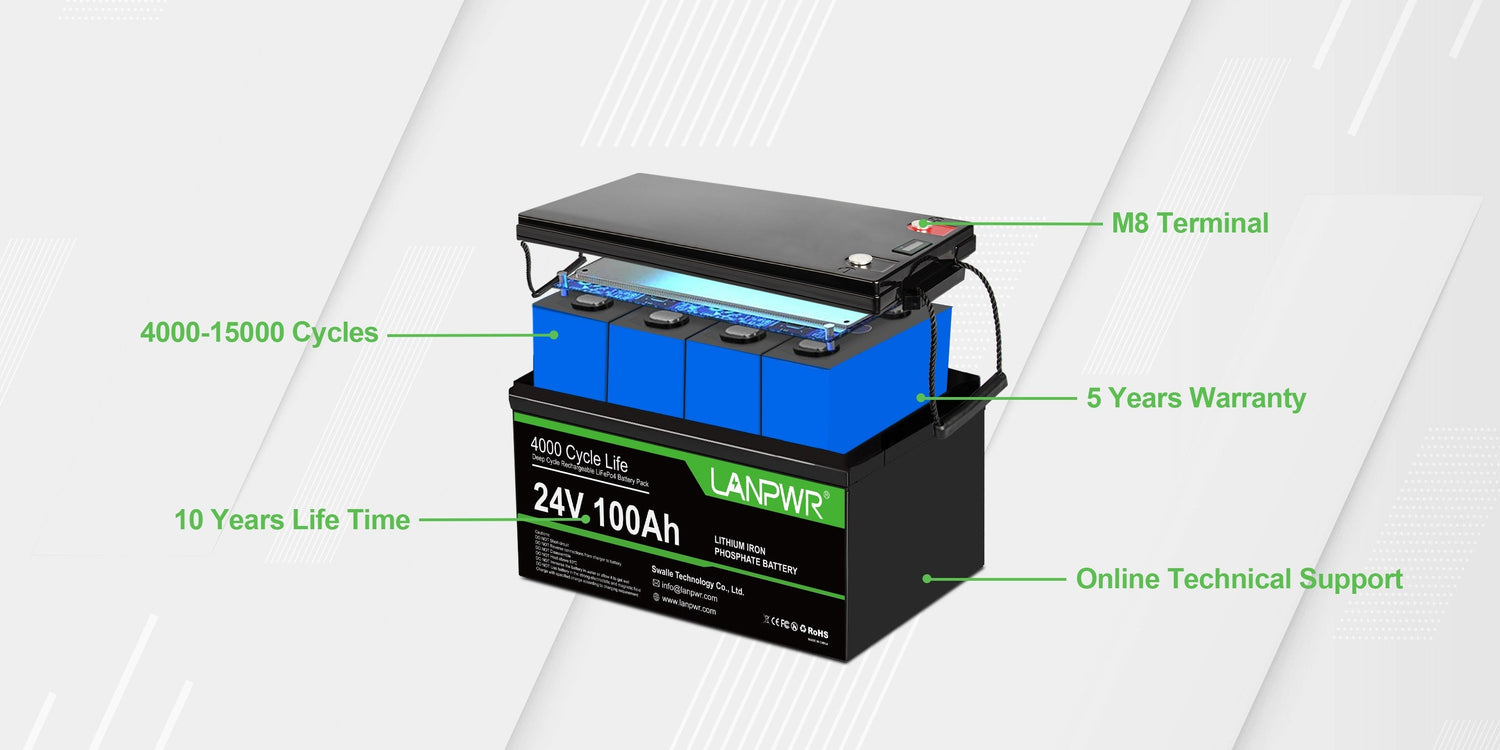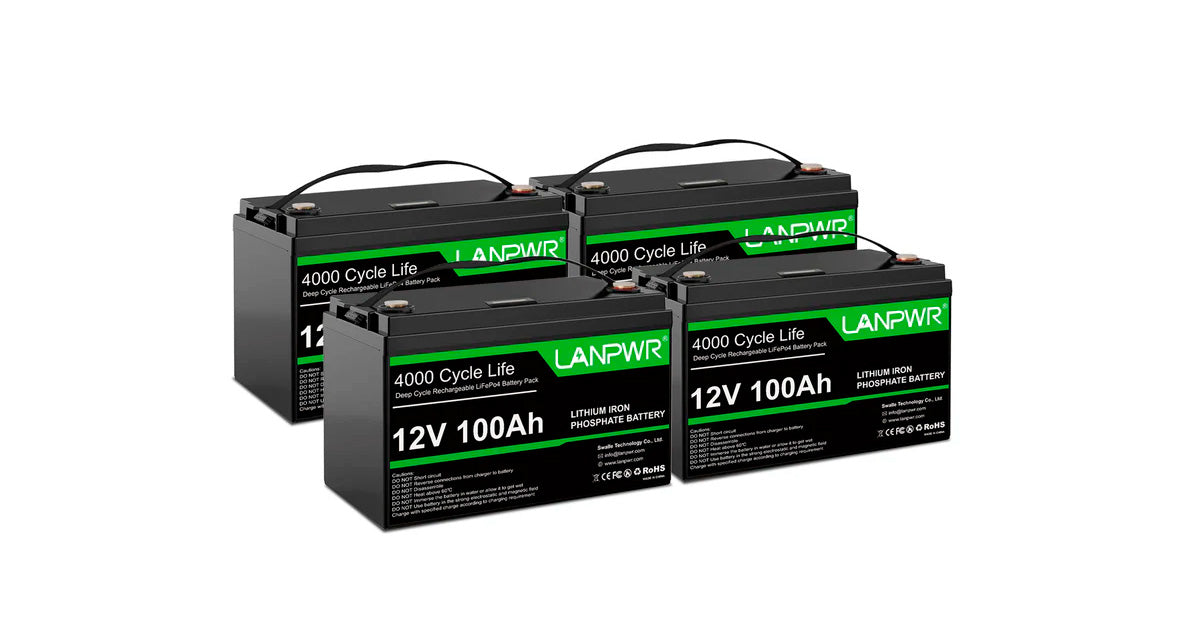Find out what factors affect the battery's longevity, and find out how you can choose durable, long-lasting batteries for different uses. Explore tips and practices for battery maintenance to extend the life of batteries and ensure maximum performance.
You can read more about it here:
A high-quality and durable battery is essential in today's technologically driven society. Lithium-ion is the clear leader in the vast array of battery types due to its superior performance. This detailed guide by LANPWR, the world's undisputed leader in battery technologies, explores all the intricate details of lithium-ion cells, highlighting how they are used in today's electronic devices and power systems.
Understanding Lithium-Ion Batteries
Principles of Basic Design
These batteries have a relatively low resistance and are known for their high energy density. The characteristics of lithium-ion batteries are more than just advantageous. They're essential, enabling everything from robust electric vehicles to compact mobile devices to operate efficiently. This is because lithium-ion cells have a high energy storage capacity, and they lose very little energy when powering devices. The ability of these lithium-ion batteries to adapt quickly to charging and discharging makes them an indispensable part of modern technology. This includes smartphones, grid-scale systems to store energy, and other applications.
Lithium batteries and the Chemistry behind them
Chemical reactions play a key role in the operation of lithium-ion rechargeable batteries. These chemical processes allow energy to be stored and released efficiently. These chemical reactions play a key role in the battery's function. Not only do they affect battery performance, but their life expectancy is also affected. For anyone looking to optimize the longevity and utility of their investments in lithium-ion batteries, a better understanding of these chemical processes is essential. The complex nature of these batteries can be seen in the interaction of the anode and cathode when charging, which includes the movement of lithium ions through the electrolyte. Understanding the chemistry of the device is essential since it affects the safety and efficacy of the battery and also influences advancements in the field.

The Factors Affecting Battery Longevity
Charge and Discharge Cycles
How you charge and discharge your lithium-ion cells can impact their lifespan. Longevity and health are dependent on several key factors.
- Charge levels: Use the batteries at the correct charge level to prevent overcharging. This can seriously damage the battery.
- The cycle life of a battery depends on the "depth of discharge" (DoD). Batteries with shallow DoD are more likely to last.
- Charge and Discharge Balanced: By implementing a balanced charge and discharge approach, you can improve the life of your battery and guarantee reliable performance.
Adhering to these guidelines will maximize battery capacity and cycle life, ensuring your battery remains a reliable power source.
Temperature effects
Temperature is a major factor in determining the lifespan and performance of lithium-ion batteries. These are the key factors:
- Temperature Sensitivity—Batteries are susceptible to extreme temperatures. High temperatures can accelerate battery degradation, and the battery can also lose its efficiency at extremely low temperatures.
- Environmental Control: By managing environmental conditions, you can minimize the adverse effects of temperature. The following is involved:
- Battery system design that can handle extreme temperatures.
- Climate-controlled environments are recommended for the storage and operation of batteries.
Managing your battery's temperature is vital to extending its life properly.
Battery Management and Maintenance
A battery management system is required for optimal performance. BMSs perform a variety of functions.
- Optimal Charge Regulator: The battery must operate within safe charge parameters to avoid deep discharge and overcharging.
- Temperature Protection - The BMS controls and monitors battery temperature to avoid damage caused by temperature extremes.
- Performance monitoring: monitoring battery performance continuously, adjusting operational parameters to achieve optimal performance.
How to extend battery life
Charging Strategy
To extend the life of your lithium-ion cell, keep it partially charged. Avoiding full discharge and charging cycles can reduce the useful life of the lithium-ion battery. Avoiding these extremes allows batteries to retain stable chemical integrity, which reduces wear at the molecular scale. Implementing this strategy provides a method to effectively balance energy storage needs and longevity.
Further, using smart charging technologies, which automatically halt the charging process once a set level is achieved, will help to prevent battery overcharging and extend their service life.

Operational Practices
For optimal battery performance, you must regularly adjust internal resistance and maintain routine maintenance. It is vital to follow these practices for the battery to operate at its optimal environmental and operating parameters. By regularly monitoring battery temperature and voltage, you can identify signs of wear or inefficiency before they become serious. You can then take timely measures to improve the battery's condition.
Keeping your battery clean and free from debris and dust can also prevent excessive stress and heat, further contributing to its durability and functionality.
Advanced Battery Technology
Innovations in battery capacity and energy density
Battery technology continues to evolve due to the quest for increased energy density. Efficiencies and higher capacities are essential to meeting the energy requirements of today’s devices and applications. Some of the highlights are as follows:
- Enhanced Capacity: Innovators focus on improving lithium-ion battery cells' ability to store energy.
- Improved Efficiency: Improvements aim to maximize the energy output for a given weight or size, allowing batteries to be smaller and lighter.
- Increased energy density will be critical to developing portable electronics, solar energy storage, electric cars, and other applications.
Battery Health
Recent advances in battery management systems (BMS) have improved our ability to manage and minimize the harmful effects of chemicals and environmental extremes. This technology is crucial to extending battery life and maintaining performance consistency over time. Highlights are:
- Modern BMS features: These systems monitor battery health more accurately and adjust the charging rate to reduce degradation.
- Temperature Regulation Innovations maintain optimum temperatures to reduce the risk of overheating or cold start issues.
- Lifecycle extension: Improved management techniques allow batteries to endure more charging and discharging cycles without losing significant capacity.
In conclusion, to select and maintain a long-lasting lithium-ion cell battery, you must have specialized knowledge about how the batteries function and their impact on durability. LANPWR has remained at the leading edge of this industry by consistently committing to innovative developments that improve battery life and the entire energy storage system. Looking ahead, we see a promising future for battery technology. These advances are set to revolutionize energy storage, which is expected to be vital in various sectors. The evolution of battery tech-spearheaded companies like LANPWR will transform how we consume and save energy.













Leave a comment
This site is protected by hCaptcha and the hCaptcha Privacy Policy and Terms of Service apply.